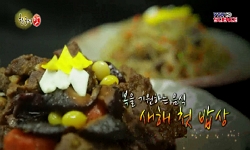The succulent herbaceous perennial Sedum sarmentosum commonly grows in the southern part of the Korean Peninsula. It is a species native to China, most likely introduced into Korea due to its edible and medicinal uses. If plants were introduced from a...
http://chineseinput.net/에서 pinyin(병음)방식으로 중국어를 변환할 수 있습니다.
변환된 중국어를 복사하여 사용하시면 됩니다.
- 中文 을 입력하시려면 zhongwen을 입력하시고 space를누르시면됩니다.
- 北京 을 입력하시려면 beijing을 입력하시고 space를 누르시면 됩니다.


Notes on genetic variation in Sedum sarmentosum (Crassulaceae): Implications for the origin of southern Korean populations
한글로보기https://www.riss.kr/link?id=A103671364
-
저자
정미윤 (경상대학교) ; Jordi López-Pujol (BioC-GReB, 바르셀로나식물원연구소) ; 정명기 (경상대학교)

- 발행기관
- 학술지명
- 권호사항
-
발행연도
2016
-
작성언어
English
-
주제어
유전적 다양도 ; 유전적 단형성 ; 기원 ; 돌나물 ; 불염 ; genetic diversity ; genetic monomorphism ; origin ; Sedum sarmentosum ; sterility
-
등재정보
KCI등재,SCOPUS,ESCI
-
자료형태
학술저널
- 발행기관 URL
-
수록면
371-377(7쪽)
-
KCI 피인용횟수
1
- DOI식별코드
- 제공처
- 소장기관
-
0
상세조회 -
0
다운로드
부가정보
다국어 초록 (Multilingual Abstract)
The succulent herbaceous perennial Sedum sarmentosum commonly grows in the southern part of the Korean Peninsula. It is a species native to China, most likely introduced into Korea due to its edible and medicinal uses. If plants were introduced from a single source, we would expect no or low levels of genetic variation in Korean populations. Alternatively, if plants were introduced from multiple sources, we would expect, in contrast, high levels of genetic diversity. To test which is more likely, we surveyed the degree of allozyme variation in ten populations of this species from southern Korea. We found that S. sarmentosum was monomorphic at all fifteen allozyme loci. However, two congeners (S. polytrichoides and S. kamtschaticum) and two related species (Hylotelephium ussuriense and H. verticillatum) maintain moderate to high levels of genetic diversity (He = 0.144, 0.203, 0.201, and 0.204, respectively). We suggest that southern Korean populations of S. sarmentosum likely descended from a single introduction of a few plants and then became naturalized exclusively via vegetative spreading (as plants in Korea, but also as occurs in other parts of its native and naturalized range, are sterile).
참고문헌 (Reference)
1 유영기, "한국특산 태백기린초(돌나물과)의 교잡 기원에 대한 검증" 한국식물분류학회 46 (46): 378-391, 2016
2 이유미, "한국내 귀화식물의 현황과 고찰" 한국식물분류학회 41 (41): 87-101, 2011
3 Murray, B. G, "Widespread chromosome variation in the endangered grassland forb Rutidosis leptorrhynchoides F. Muell. (Asteraceae: Gnaphalieae)" 87 : 83-90, 2001
4 Hamrick, J. L, "Using population genetic analyses to understand seed dispersal patterns" 37 : 641-649, 2011
5 Lee, S, "Urban heat mitigation by roof surface materials during the East Asian summer monsoon" 10 : 124012-, 2015
6 Guo, Y, "Tourism and reconciliation between Mainland China and Taiwan" 27 : 997-1005, 2006
7 Park, S, "The unnecessary uprising: Jeju Island rebellion and South Korean counterinsurgency experience 1947−48" 21 : 359-381, 2010
8 Geng, Y, "The relative importance of genetic diversity and phenotypic plasticity in determining invasion success of a clonal weed in the USA and China" 7 : 213-, 2016
9 Mayuzumi, S, "The phylogenetic position of Eastern Asian Sedoideae (Crassulaceae) inferred from chloroplast and nuclear DNA sequences" 29 : 587-598, 2004
10 Spongberg, S. A, "The genera of Crassulaceae in the southeastern United States" 59 : 197-248, 1978
1 유영기, "한국특산 태백기린초(돌나물과)의 교잡 기원에 대한 검증" 한국식물분류학회 46 (46): 378-391, 2016
2 이유미, "한국내 귀화식물의 현황과 고찰" 한국식물분류학회 41 (41): 87-101, 2011
3 Murray, B. G, "Widespread chromosome variation in the endangered grassland forb Rutidosis leptorrhynchoides F. Muell. (Asteraceae: Gnaphalieae)" 87 : 83-90, 2001
4 Hamrick, J. L, "Using population genetic analyses to understand seed dispersal patterns" 37 : 641-649, 2011
5 Lee, S, "Urban heat mitigation by roof surface materials during the East Asian summer monsoon" 10 : 124012-, 2015
6 Guo, Y, "Tourism and reconciliation between Mainland China and Taiwan" 27 : 997-1005, 2006
7 Park, S, "The unnecessary uprising: Jeju Island rebellion and South Korean counterinsurgency experience 1947−48" 21 : 359-381, 2010
8 Geng, Y, "The relative importance of genetic diversity and phenotypic plasticity in determining invasion success of a clonal weed in the USA and China" 7 : 213-, 2016
9 Mayuzumi, S, "The phylogenetic position of Eastern Asian Sedoideae (Crassulaceae) inferred from chloroplast and nuclear DNA sequences" 29 : 587-598, 2004
10 Spongberg, S. A, "The genera of Crassulaceae in the southeastern United States" 59 : 197-248, 1978
11 Soltis, D. E, "Starch gel electrophoresis of ferns: a compilation of grinding buffers, gel and electrode buffers, and staining schedules" 73 : 9-27, 1983
12 Bai, Y, "Sedum sarmentosum Bunge extract exerts renal antifibrotic effects in vivo and in vitro" 105 : 22-30, 2014
13 Su, M.-H, "Sedum sarmentosum Bunge (Crassulaceae), a newly naturalized herb in Taiwan" 59 : 82-85, 2014
14 정미윤, "Population genetic structure of Sedum polytrichoides (Crassulaceae): Insights into barriers to gene flow" 한국식물분류학회 46 (46): 361-370, 2016
15 Ramsey, J, "Pathways, mechanisms, and rates of polyploidy formation in flowering plants" 29 : 467-501, 1998
16 Yeh, F. C, "POPGENE version 1.31: Microsoft Windows-Based Freeware for Population Genetic Analysis. Quick Users’ Guide"
17 Kwack, B.-W, "On the ecology of Sedum sarmentosum Bunge in Korea" 17 : 69-77, 1976
18 Chung, M. G, "Notes on allozyme variation in Lycoris radiata (Amaryllidaceae) from Korea" 40 : 227-230, 1999
19 Sîrbu, C, "New contribution to the study of alien flora in Romania" 18 : 121-134, 2011
20 Hsu, P.-S, "New chromosome counts of some dicots in the Sino-Japanese region and their systematics and evolutionary significance" 32 : 411-418, 1994
21 Hagenblad, J, "Low genetic diversity despite multiple introductions of the invasive plant species Impatiens glandulifera in Europe" 16 : 103-, 2015
22 KNA (Korea National Arboretum), "Korea Biodiversity Information System: Edible Resources" Korea National Arboretum
23 Woo, K. S, "Jeju Island Geopark: A Volcanic Wonder of Korea" Springer 88-, 2013
24 Doebley, J, "Isozymes in Plant Biology" Dioscorides Press 165-191, 1989
25 WVDNR (West Virginia Division of Natural Resources), "Invasive plant species of West Virginia" WVDNR Natural Heritage Program, Elkins
26 Miyawaki, S, "Invasive alien plant species in riparian areas of Japan: the contribution of agricultural weeds, revegetation species and aquacultural species" 8 : 89-101, 2004
27 ‘t Hart H, "Illustrated Handbook of Succulent Plants: Crassulaceae" Springer 235-332, 2003
28 Rollins, L. A, "High genetic diversity is not essential for successful introduction" 3 : 4501-4517, 2013
29 Pappert, R. A, "Genetic variation in Pueraria lobata (Fabaceae), an introduced, clonal, invasive plant of the southeastern United States" 87 : 1240-1245, 2000
30 Zhang, Y.-Y, "Genetic uniformity characterizes the invasive spread of water hyacinth (Eichhornia crassipes), a clonal aquatic plant" 19 : 1774-1786, 2010
31 Lambertini, C, "Genetic diversity in three invasive clonal aquatic species in New Zealand" 11 : 52-, 2010
32 Godt, M. J. W, "Genetic diversity in rare southeastern plants" 21 : 61-70, 2001
33 Tang, W.-S, "Flora of Taiwan, Vol. 3" Editorial Committee, Department of Botany, National Taiwan University 10-34, 1993
34 Ohwi, J, "Flora of North America North of Mexico, Vol. 8" Oxford University Press 199-222, 2009
35 Ohwi, J, "Flora of Japan" Smithsonian Institute 1066-, 1965
36 Fu, K, "Flora of China, Vol. 6. Caryophyllaceae through Lardizabalaceae" Science Press, Beijing and Missouri Botanical Garden Press 202-268, 2001
37 Goudet, J, "FSTAT (version 1.2): a computer program to calculate F-statistics" 86 : 485-486, 1995
38 Nei, M, "Estimation of average heterozygosity and genetic distance from a small number of individuals" 89 : 583-590, 1978
39 Haufler, C. H, "Enzyme variability and modes of evolution in Bommeria (Pteridaceae)" 10 : 92-104, 1985
40 Xu, J, "Development and characterization of polymorphic microsatellite markers for Sedum sarmentosum (Crassulaceae) and their cross-species transferability" 20 : 19929-19935, 2015
41 Weising, K, "DNA Fingerprinting in Plants: Principles, Methods and Applications" Taylor & Francis Group 472-, 2005
42 Khush, G. S, "Cytogenetics of aneuploids" Academic Press 300-, 1973
43 Chung, M. Y, "Contrasting levels of clonal and within-population genetic diversity between the 2 ecologically different herbs Polygonatum stenophyllum and Polygonatum inflatum (Liliaceae)" 105 : 690-701, 2014
44 Chung, M. Y, "Comparative genetic structure between Sedum ussuriense and S. kamtschaticum (Crassulaceae), two stonecrops co-occurring on rocky cliffs" 101 : 946-956, 2014
45 Uhl, C. H, "Chromosomes of Crassulaceae from Japan and South Korea" 37 : 59-81, 1972
46 모은경, "Assessment of Antioxidant Capacity of Sedum (Sedum sarmentosum) as a Valuable Natural Antioxidant Source" 한국식품과학회 20 (20): 1061-1067, 2011
47 Kang, T. H, "Antiproliferative effects of alkaloids from Sedum sarmentosum on murine and human hepatoma cell lines" 70 : 177-182, 2000
48 Jung, H.-J, "Anti-inflammatory, anti-angiogenic and antinociceptive activities of Sedum sarmentosum extract" 116 : 138-143, 2008
49 Henry, I. M, "Aneuploidy and genetic variation in the Arabidopsis thaliana triploid response" 170 : 1979-1988, 2005
50 Hsu, P.-S, "An analysis of some local populations of the Sedum sarmentosum Bunge complex" 1 : 37-50, 1983
51 Clayton, J. W, "Amine-citrate buffers for pH control in starch gel electrophoresis" 29 : 1169-1172, 1972
52 Mitton, J. B, "Allozyme polymorphisms detected in mature needle tissue of ponderosa pine" 70 : 86-89, 1979
53 Xiao, M, "A review of green roof research and development in China" 40 : 633-648, 2014
동일학술지(권/호) 다른 논문
-
- 한국식물분류학회
- 정미윤
- 2016
- KCI등재,SCOPUS,ESCI
-
- 한국식물분류학회
- 정미윤
- 2016
- KCI등재,SCOPUS,ESCI
-
울릉도, 독도 초종용에서 형태 변이와 지리적 분포 양상
- 한국식물분류학회
- 이웅
- 2016
- KCI등재,SCOPUS,ESCI
-
New records of ferns in the flora of Myanmar found in Natma Taung National Park in the Chin State
- 한국식물분류학회
- Thet Yu Nwe
- 2016
- KCI등재,SCOPUS,ESCI
분석정보
인용정보 인용지수 설명보기
학술지 이력
| 연월일 | 이력구분 | 이력상세 | 등재구분 |
|---|---|---|---|
| 2024 | 평가예정 | 해외DB학술지평가 신청대상 (해외등재 학술지 평가) | |
| 2021-01-01 | 평가 | 등재학술지 선정 (해외등재 학술지 평가) |  |
| 2020-12-01 | 평가 | 등재후보로 하락 (해외등재 학술지 평가) |  |
| 2019-01-01 | 평가 | 등재학술지 유지 (계속평가) |  |
| 2016-01-01 | 평가 | 등재학술지 선정 (계속평가) |  |
| 2015-12-01 | 평가 | 등재후보로 하락 (기타) |  |
| 2011-01-01 | 평가 | 등재 1차 FAIL (등재유지) |  |
| 2009-01-01 | 평가 | 등재학술지 유지 (등재유지) |  |
| 2007-01-01 | 평가 | 등재학술지 유지 (등재유지) |  |
| 2006-09-14 | 학회명변경 | 영문명 : The Plant Taxonomic Society Of Korea -> The Korean Society of Plant Taxonomists |  |
| 2004-01-01 | 평가 | 등재학술지 선정 (등재후보2차) |  |
| 2003-01-01 | 평가 | 등재후보 1차 PASS (등재후보1차) |  |
| 2002-01-01 | 평가 | 등재후보 1차 FAIL (등재후보1차) |  |
| 2000-07-01 | 평가 | 등재후보학술지 선정 (신규평가) |  |
학술지 인용정보
| 기준연도 | WOS-KCI 통합IF(2년) | KCIF(2년) | KCIF(3년) |
|---|---|---|---|
| 2016 | 0.23 | 0.23 | 0.26 |
| KCIF(4년) | KCIF(5년) | 중심성지수(3년) | 즉시성지수 |
| 0.27 | 0.43 | 0.521 | 0.08 |




 ScienceON
ScienceON







